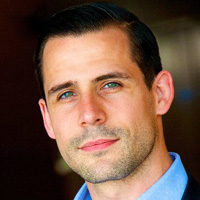
In our health system, whose job is it to care about innovation? Is it the job of the head of information technology (IT), the chief of staff or the hospital’s CEO? Likely they all care about innovation, but who’s responsible for it?
Canada isn’t short on innovation. We discovered insulin, the Ebola vaccine and built the first electron microscope. The country is home to hundreds of innovative companies, like Maple, BlueRock Therapeutics and SeamlessMD, transforming the health technology landscape. Our top health institutions are global forces, too. For example, the Children’s Hospital of Eastern Ontario, located in Ottawa, challenged American-based Transgenomic in 2016 and won, preventing gene patents from standing in the way of diagnosing life-threatening illnesses. The University of B.C.’s school of population and public health established the SPOR-Canadian Data Platform, an ambitious seven-year initiative to weave the country’s health administration data into a single portal for all future research and population-level data analyses. We are also among the few elite countries to offer a form of universal health-care coverage, where every Canadian citizen, at any time, can walk into an emergency room, receive excellent care and not have to worry about a medical bill.
It’s impressive stuff.
Except that some 26,000 Canadians died from COVID-19, of which three-quarters were in long-term care and retirement homes. As the pandemic began, dramatic vulnerabilities were exposed in our personal protective equipment (PPE) supply chain and our capacity to contact trace, screen and test for COVID-19. Over a year later, provinces are still struggling, beginning with the flu vaccine and then with the logistics of the COVID-19 vaccine.
Why is Canada’s health-care sector doing well on some fronts and so poorly on others?
There are many explanations, most beginning or ending with money. However, we would argue another connected but distinct reason: there’s no home for innovation in health care. Real innovation serves a critical function in accomplishing much of what we are proud of in the Canadian health system, yet rarely is it anyone’s actual job.
Yes, the head of IT, chief of staff and even the CEO care about innovation, but all those senior roles have complex portfolios that seldom prioritize innovation in their job description. The truth is, unless there is someone specifically tasked with looking for, bringing in and/or proposing innovations, Canada’s health system is doomed to incremental improvement. Leslie Boehm and Gregory Marchildon recently made a similar argument for vaccine-making capability and Connaught Laboratories. Put simply, innovation needs dedicated resources to thrive in Canada’s health system.
Can we say if such a role existed across the health system, that 26,000 Canadians would still be alive today? No, and to answer otherwise would be a disservice to the clinicians, nurses and other front-line care staff who continue to work tirelessly throughout the pandemic. But they sure would have appreciated the help.
While problems were quick to be identified – like long-term care shared rooms, PPE and ventilator supply, screening and surveillance challenges, staffing shortages, vaccine distribution, scheduling, booking and so forth – the solutions to these problems were not so readily available.
How are front-line care staff to know what technology to buy or what technology is even available? While IT and procurement departments can provide such support for their respective hospitals, they were not designed with the type of urgent review demanded during the onset of the pandemic. Hence, a need for a formal innovation role.
From an organizational perspective, these roles could have filled important information gaps on the art-of-the-possible with technology, brokered relationships with willing startups, then established the structures needed to test solutions without drawing on scarce resources. At a macro level, those responsible for innovation could have leveraged existing health-care networks to identify technology trends and launched an informal buying group in response to COVID-19. The savings in both time and money from the collective purchasing power of hospitals for things like queueing software, contract-tracing technology or screening applications, for example, would have been significant. Instead everyone just figured it out on their own, some building new technologies and others buying them, but most just relying on what they already knew: manual or paper-based solutions, the most expensive and time-consuming of them all. Anyone over the past year who was greeted at a hospital entrance with a COVID-19 screener questionnaire, either delivered verbally by a person or on a physical form, knows what we are talking about.
Right now, our system almost always relies on private industry to penetrate the health-care environment to spur innovation. This model has consequences for the country because many Canadian startups don’t even bother with the hurdles of local health-care providers when there are more willing and accessible clients south of the border. One indicator of this problem is the $5-plus billion trade deficit between the U.S. and Canada for imports and exports of medical devices.
But aren’t health-care providers motivated to introduce modern solutions and other innovations from the market? Sometimes, yes, but for hospitals at least, procurement queues (the priority list of things to buy) can be decades long and medical-grade technology is notoriously expensive. Most hospitals don’t even have regular capital budgets – they rely on their foundation’s donors to create such opportunities. This reinforces our earlier point: most opportunities begin or end with money.
In a 2020 article from the Canadian Medical Association Journal, researchers highlight how erratic and insufficient capital funding can lead to reduced standards of care for patients, especially when new technology for diagnosis or treatment becomes available. One way to buffer against such capital shortfalls is to diversify with “novel funding.” The challenge is that rarely is anyone available on the inside of a hospital with the time, let alone the training or responsibility, to apply and be successful in obtaining such funding. Furthermore, if they do manage to get the funding, someone must also manage the project and reporting requirements.
So, what is “novel funding?” Many funders have begun to open their doors to hospitals and other providers to receive their dollars. This trend will only be accelerated by the pandemic, with many more funders entering the health innovation fray. Two trailblazers on this front are the Coordinated Accessible National (CAN) Health Network and the Ontario BioSciences Innovation Organization Early Adaptor Health Network (EAHN). Both created accessible funding opportunities for health-care providers with the capacity to work with and support Canadian-made health innovations.
At Bruyère, an academic health-care organization in Ottawa, a number of CAN Health Network pilots were implemented during the pandemic. One was with a hearing technology startup called SHOEBOX, where they built rapid hearing assessments as part of the vital signs testing to ensure patients could hear what their doctor was saying while everyone was wearing a mask. Now more than 1,000 patients are getting their hearing tested at Bruyère every year.
Another innovative health technology company called CANImmunize helped Bruyère go paperless in rolling out the flu vaccine. This was critical at a time when not doing things digitally meant putting people at risk of COVID-19 exposure. Also, EAHN is supporting Bruyère to implement a new patient-transfer robotic system with Able Innovations to reduce staffing shortages from injuries due to patient lifts, something challenging all hospitals. All these initiatives came with additional support and funding from CAN Health Network and EAHN for Bruyère.
For other health-care providers interested in this type of “innovation” work and funding, the federal government recently announced another expansion of the CAN Health Network and EAHN is already looking out for its next project.
While these opportunities are far from solutions to the larger systemic issues in health care, they are a step in the right direction, delivering the results Canadians have come to expect from their public health system. COVID-19 tore off neglected Band-Aid solutions and exposed deep vulnerabilities within Canada’s health system, but the pandemic also engendered a fuller appreciation for innovation, technology and industry partnerships.
If we are to learn from this crisis and leverage this newfound energy around innovation in health care, hospitals and other care providers need dedicated personnel and resources to see it through. It’s time we give health innovation a proper home and make someone responsible for it.












